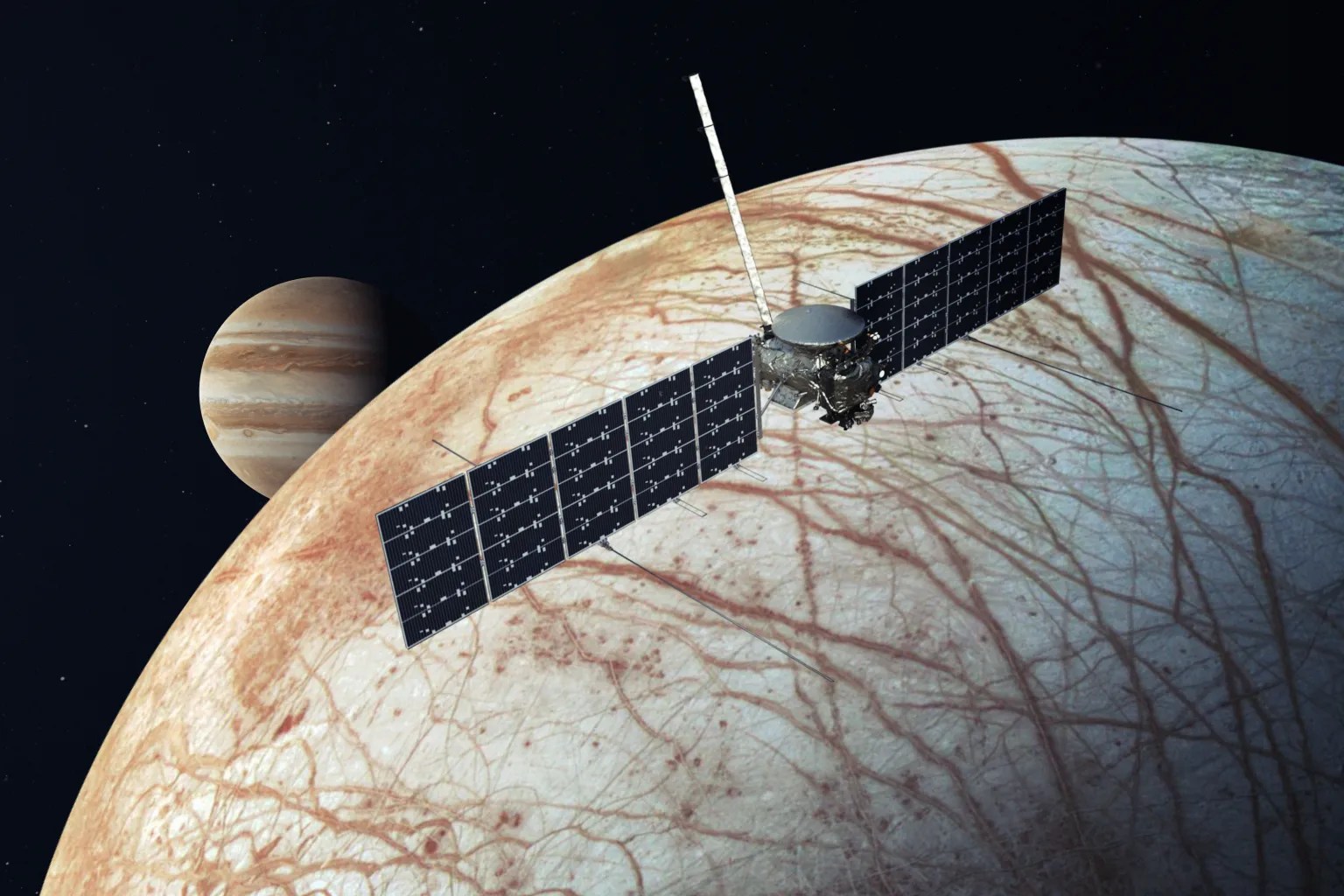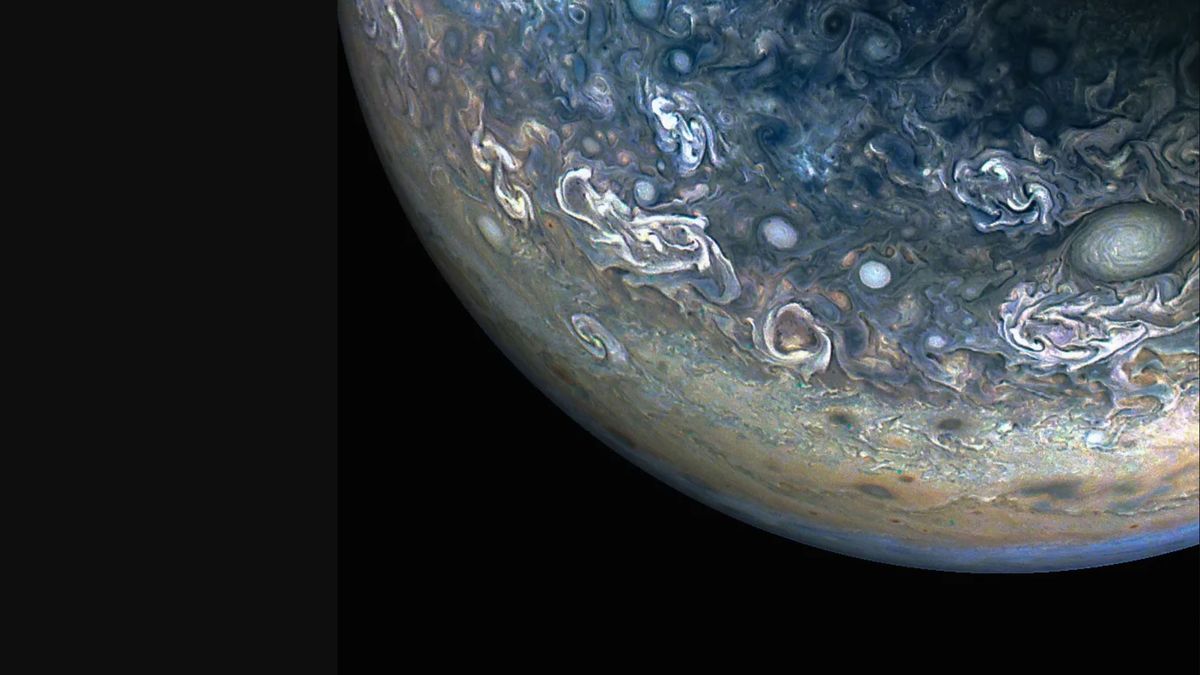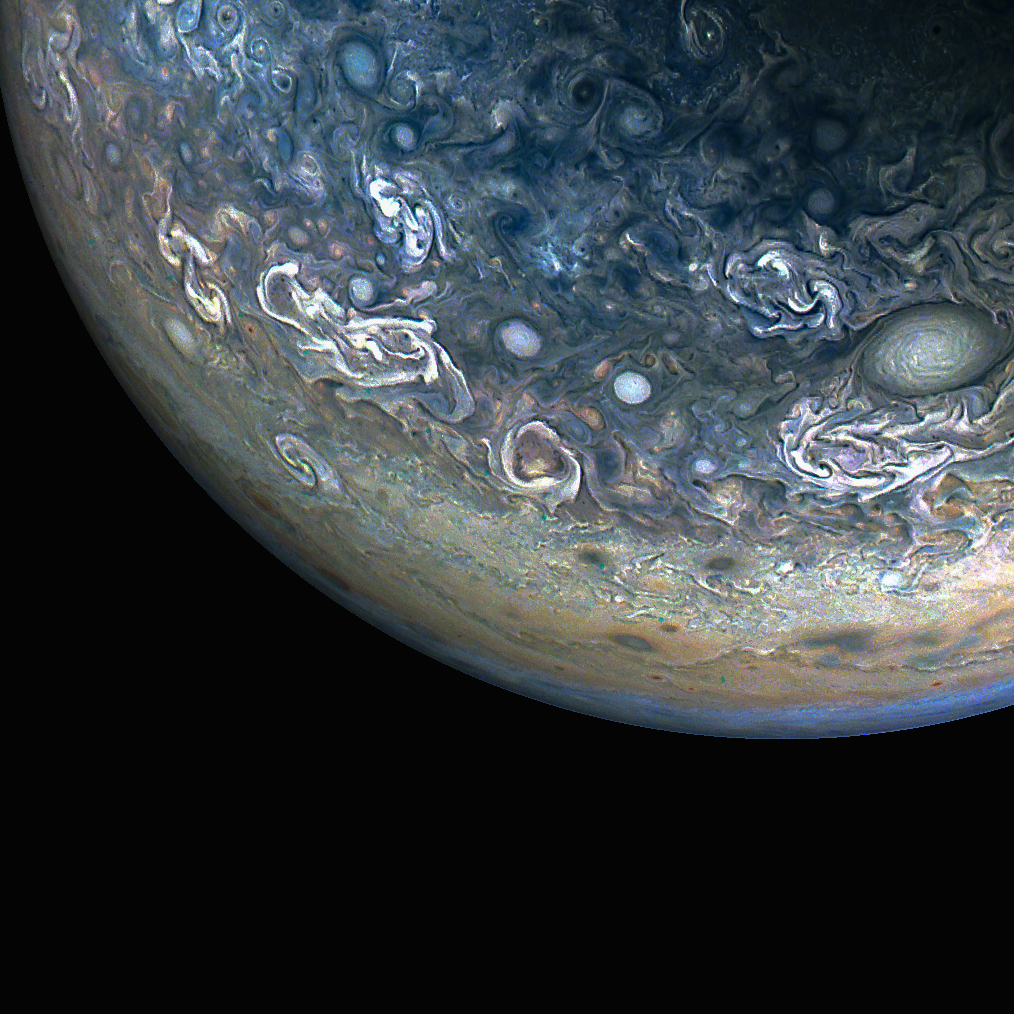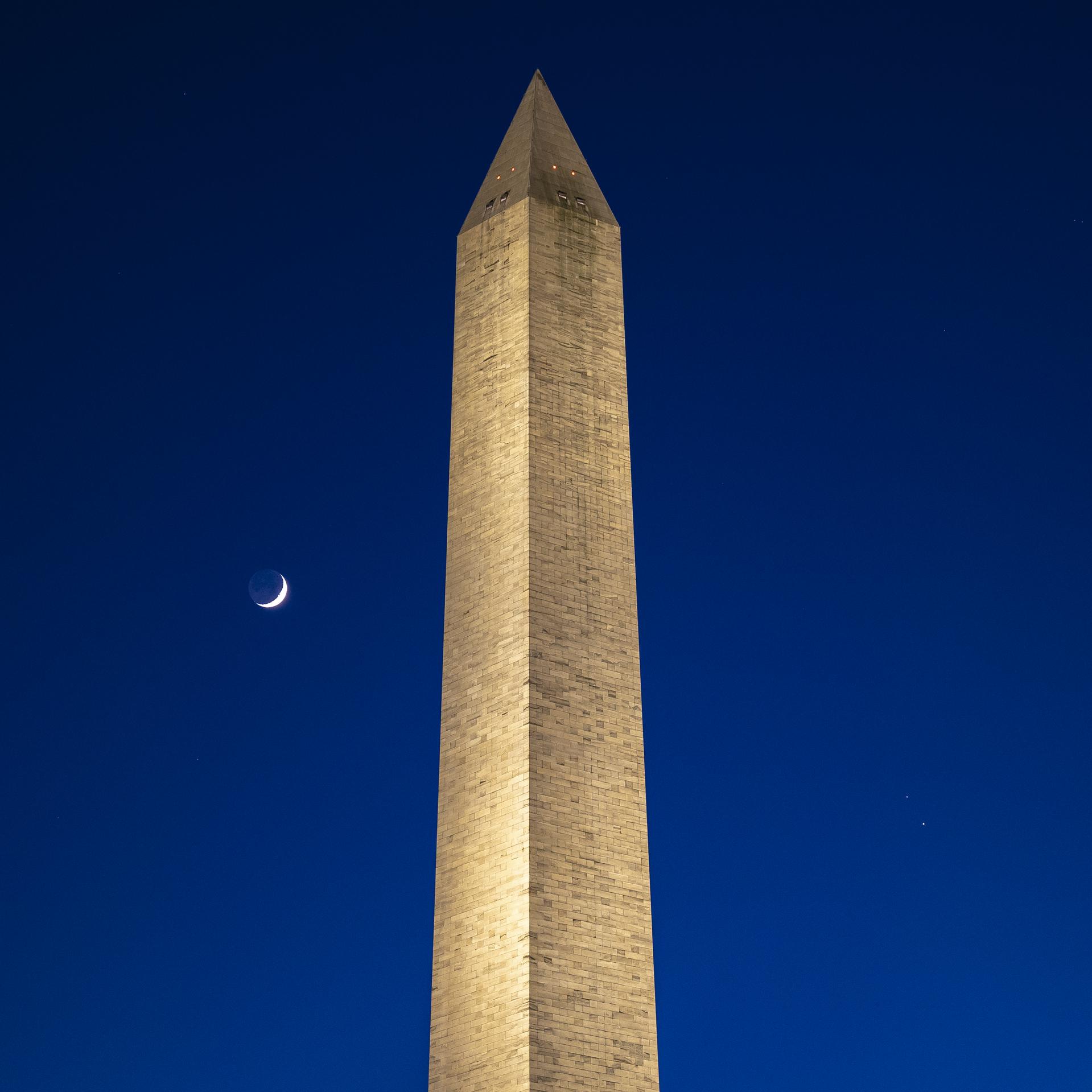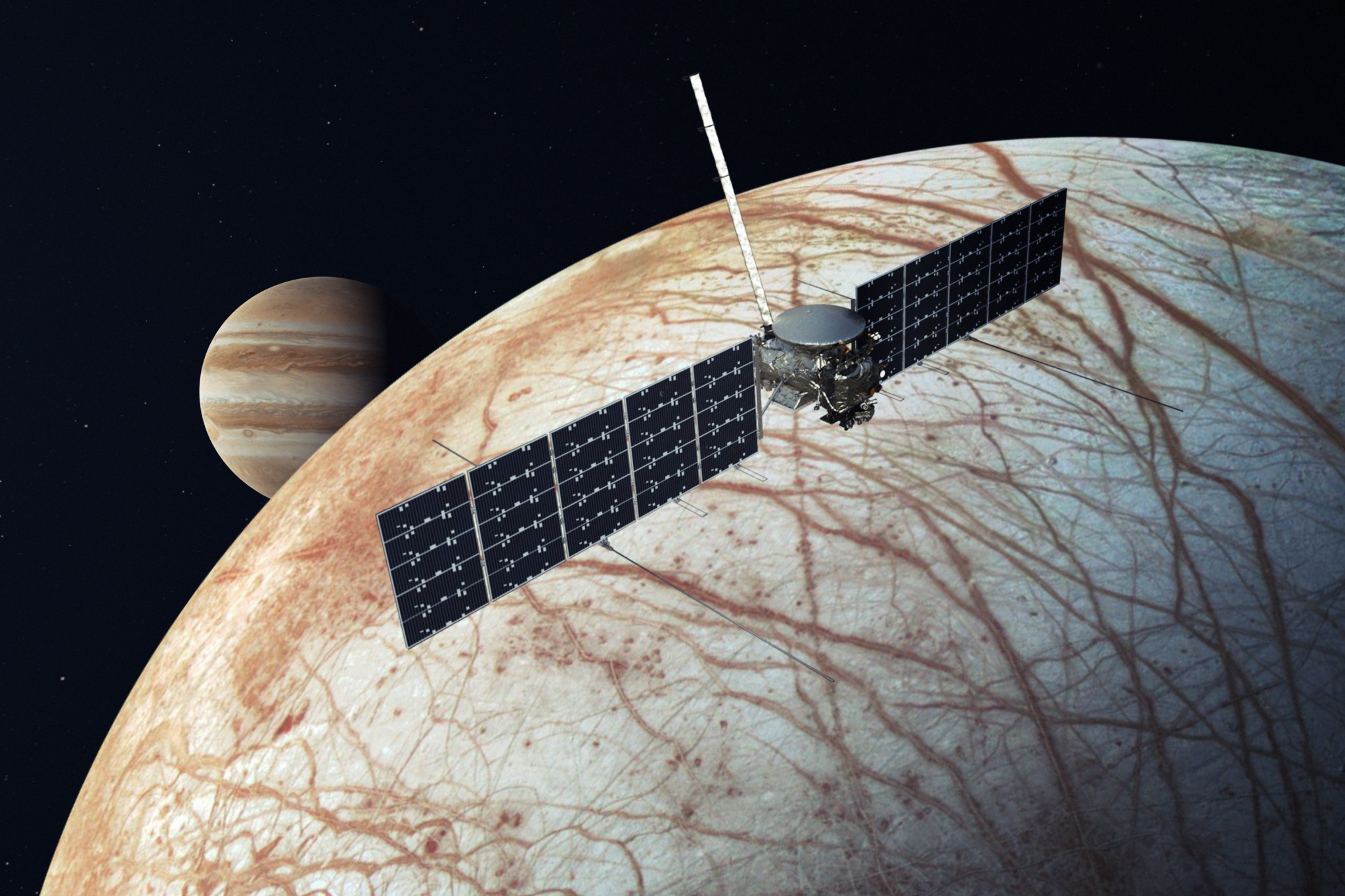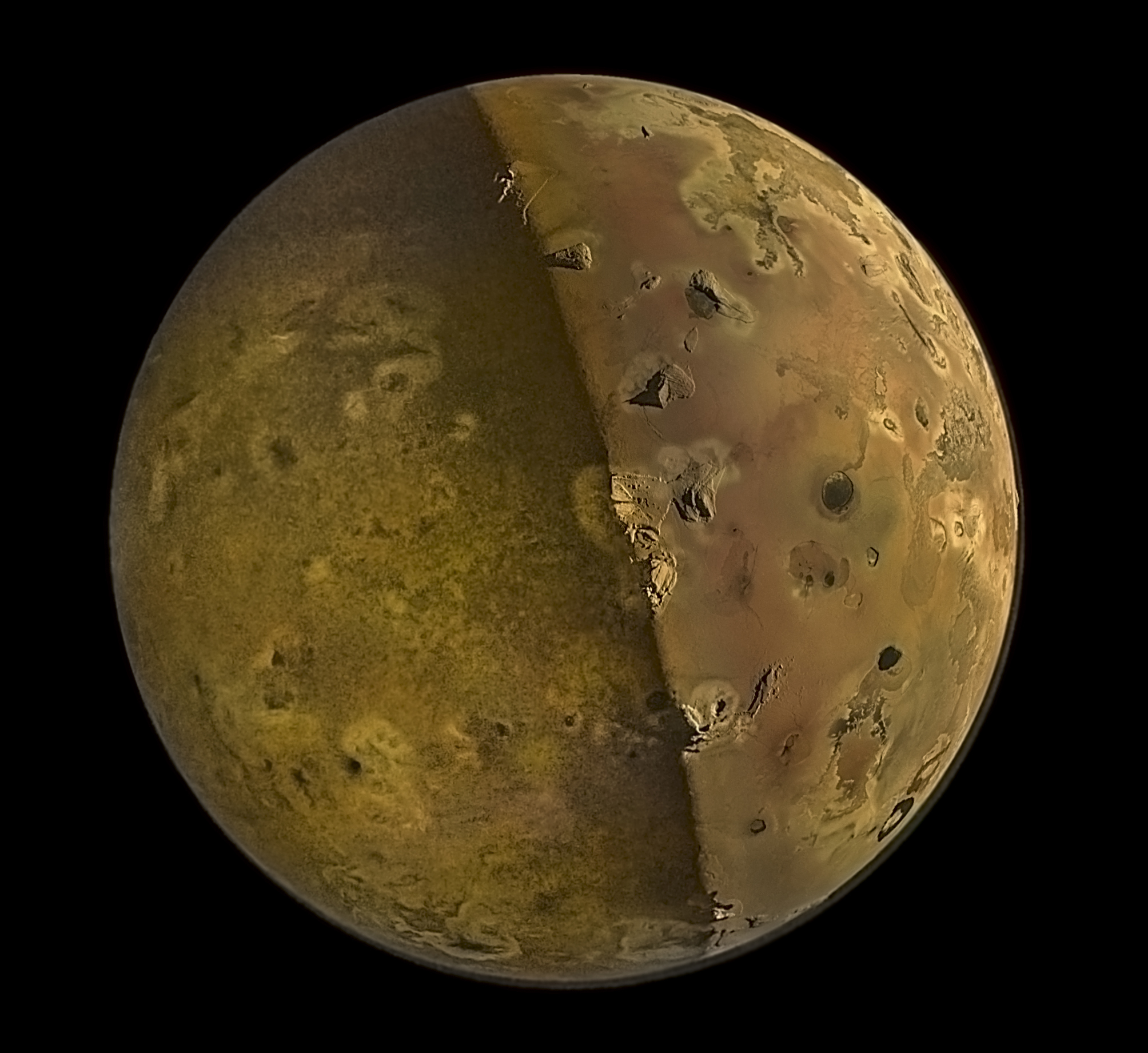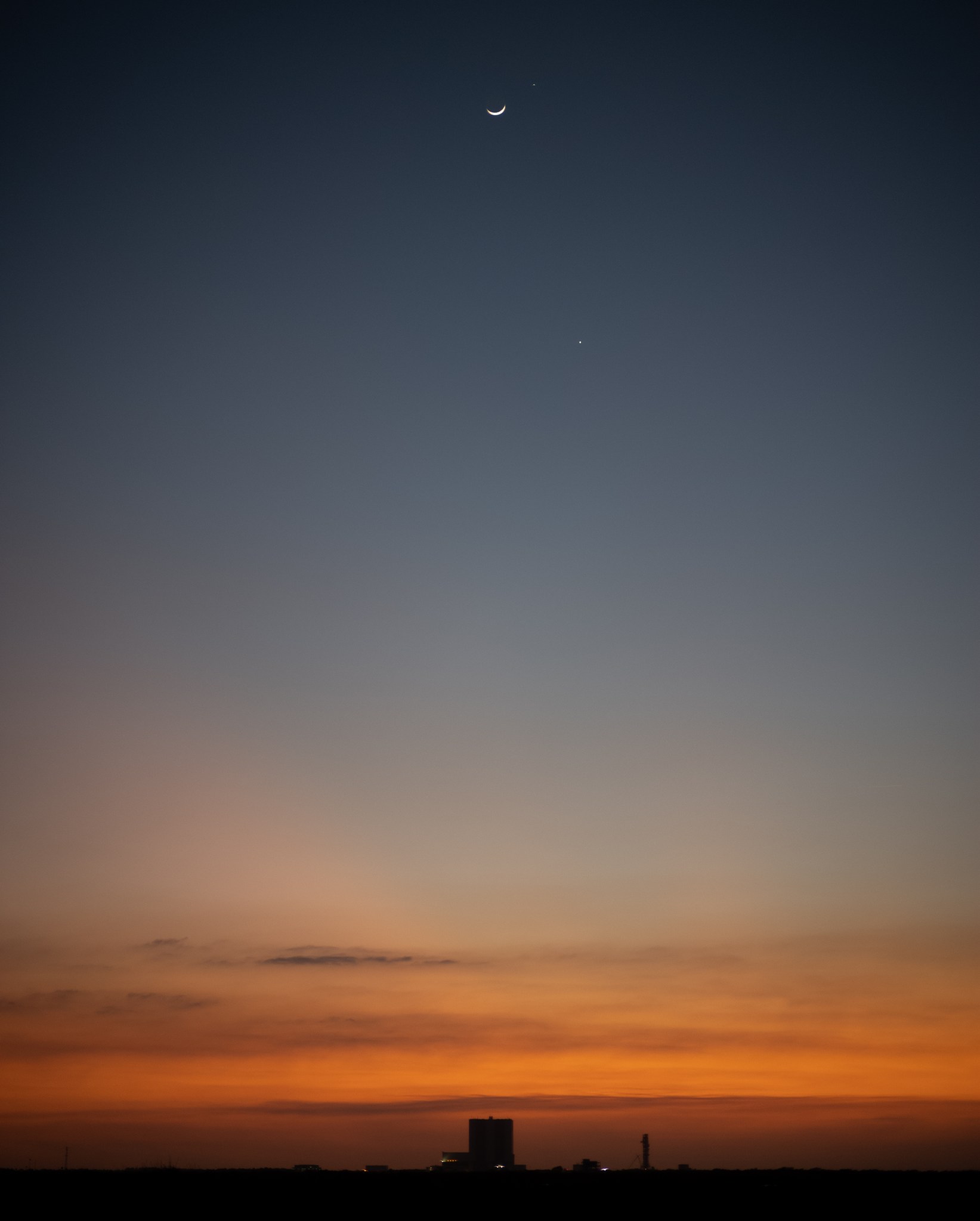Artist’s rendering of NASA’s Europa Clipper spacecraft. Credit: NASA/JPL-Caltech NASA will hold a media teleconference at 4 p.m. EDT, Monday, Sept. 9, to provide an update on Europa Clipper, a mission that will study whether Jupiter’s moon Europa could be hospitable to life. The teleconference will occur after a key decision point meeting earlier that day regarding next steps for the mission. Audio of the teleconference will stream live on the agency’s website at: https://www.nasa.gov/live Participants in the teleconference include: Nicola Fox, associate administrator, Science Mission Directorate, NASA Headquarters Laurie…
Read MoreTag: Jupiter
Jupiter’s surreal clouds swirl in new van Gogh-esque view from NASA’s Juno probe (photo)
Vivid clouds swirl across Jupiter’s skies like colorful brushstrokes across a painting in a new photo from NASA‘s Juno spacecraft. The image, taken during the spacecraft’s 61st close flyby of Jupiter on May 12, 2024, hones in on activity in the planet’s northern hemisphere. Juno was approximately 18,000 miles (29,000 kilometers) above Jupiter’s cloud tops when it captured this new view, highlighting the planet’s persistent storms and colorful bands created by strong winds in its atmosphere. “It provides a detailed view of chaotic clouds and cyclonic storms in an area…
Read MoreNASA’s Juno Mission Captures the Colorful and Chaotic Clouds of Jupiter
Image data: NASA/JPL-Caltech/SwRI/MSSSImage processing by Gary Eason © CC BY During its 61st close flyby of Jupiter on May 12, 2024, NASA’s Juno spacecraft captured this color-enhanced view of the giant planet’s northern hemisphere. It provides a detailed view of chaotic clouds and cyclonic storms in an area known to scientists as a folded filamentary region. In these regions, the zonal jets that create the familiar banded patterns in Jupiter’s clouds break down, leading to turbulent patterns and cloud structures that rapidly evolve over the course of only a few…
Read MoreNASA’s Juno probe captures fascinating high-resolution images of Jupiter’s icy moon Europa
When NASA’s Juno spacecraft performed its closest approach to Jupiter‘s moon Europa in September 2022, it captured evidence not only for pockets of briny water connected to the world’s deep subsurface ocean, but also for potential scars formed by towering plumes of water vapor — and it caught that evidence on camera The majority of imagery from the Juno mission is taken by an instrument called JunoCam, which scientists revealed was able to take four high-resolution images of Europa’s surface as it raced past the icy moon at an altitude…
Read MoreA Moonlit Trio
NASA/Bill Ingalls The Moon (left), Saturn, and Jupiter (lower right; Saturn is above and to the left of Jupiter) were seen in the sky above the Washington Memorial on Dec. 17, 2020. At the time, Saturn and Jupiter were nearing each other in the sky, culminating in a “great conjunction” on Dec. 21, where they appeared a tenth of a degree apart. Great conjunctions between Jupiter and Saturn happen every 20 years, making the planets appear to be close to one another. This closeness occurs because Jupiter orbits the Sun…
Read MoreNASA Selects Students for Europa Clipper Intern Program
4 min read NASA Selects Students for Europa Clipper Intern Program NASA has selected 40 undergraduate students for the first year of its Europa ICONS (Inspiring Clipper: Opportunities for Next-generation Scientists) internship program, supporting the agency’s Europa Clipper mission. Europa ICONS matches students with mentors from the mission’s science team for a 10-week program to conduct original scientific research on topics related to the mission to Jupiter’s moon Europa. Artist’s rendering of NASA’s Europa Clipper spacecraft. NASA/JPL-Caltech The program is planned to run every year until Europa Clipper completes its prime…
Read MoreNASA’s Juno probe captures amazing views of Jupiter’s volcanic moon Io (video)
The four biggest moons of Jupiter aren’t just blurry smudges in Galileo’s telescope anymore. The Italian astronomer Galileo Galilei discovered Ganymede, Callisto, Europa and Io back in 1610, which explains why they’re called the Galilean moons. We’ve learned a lot about these exotic bodies in the past 400 years thanks to ever-improving telescope views and close-up imagery snapped by voyaging spacecraft like NASA’s Juno Jupiter orbiter. Indeed, Juno recently conducted two close flybys of Io, the most volcanically active body in the solar system, and data from the encounters is…
Read MoreHubble Telescope spies stormy weather and a shrinking Great Red Spot on Jupiter (video)
The gas giant Jupiter steals the show in these two new portraits of the planet’s opposing faces, showing the swirling storms and tumultuous cloud bands blown by winds raging at hundreds of miles per hour. The Hubble Space Telescope took these images on Jan. 5-6, 2024. Jupiter rotates once every 10 hours, Hubble was able to image one hemisphere with the famous Great Red Spot visible, and wait for the other hemisphere to come into view before imaging that. The latest images show that Jupiter is currently experiencing some action.…
Read MoreFor Your Processing Pleasure: The Sharpest Pictures of Jupiter’s Volcanic Moon Io in a Generation
1 min read For Your Processing Pleasure: The Sharpest Pictures of Jupiter’s Volcanic Moon Io in a Generation Jupiter’s moon Io, its night side illuminated by reflected sunlight from Jupiter, or “Jupitershine.” Image data: NASA/JPL-Caltech/SwRI/MSSS Image processing by Emma Wälimäki © CC BY NASA’s Juno spacecraft just made the closest flybys of Jupiter’s moon Io that any spacecraft has carried out in more than 20 years. An instrument on this spacecraft called “JunoCam” returned spectacular, high-resolution images—and raw data are now available for you to process, enhance, and investigate. On Dec. 30th, 2023, Juno…
Read MoreCrescent Moon Over NASA’s Kennedy Space Center
NASA / Joel Kowsky The crescent moon, along with Jupiter (top right of Moon) and Venus (below Moon) appeared over the Vehicle Assembly Building at NASA’s Kennedy Space Center in Florida Feb. 22, 2023, as preparations continued for NASA’s SpaceX Crew-6 mission. NASA astronauts Stephen Bowen and Warren “Woody” Hoburg, UAE (United Arab Emirates) astronaut Sultan Alneyadi, and Roscosmos cosmonaut Andrey Fedyaev launched to the International Space Station March 2, 2023. The NASA Headquarters photographers chose this photo as one of the best images from 2023. See the rest on Flickr. Image…
Read More